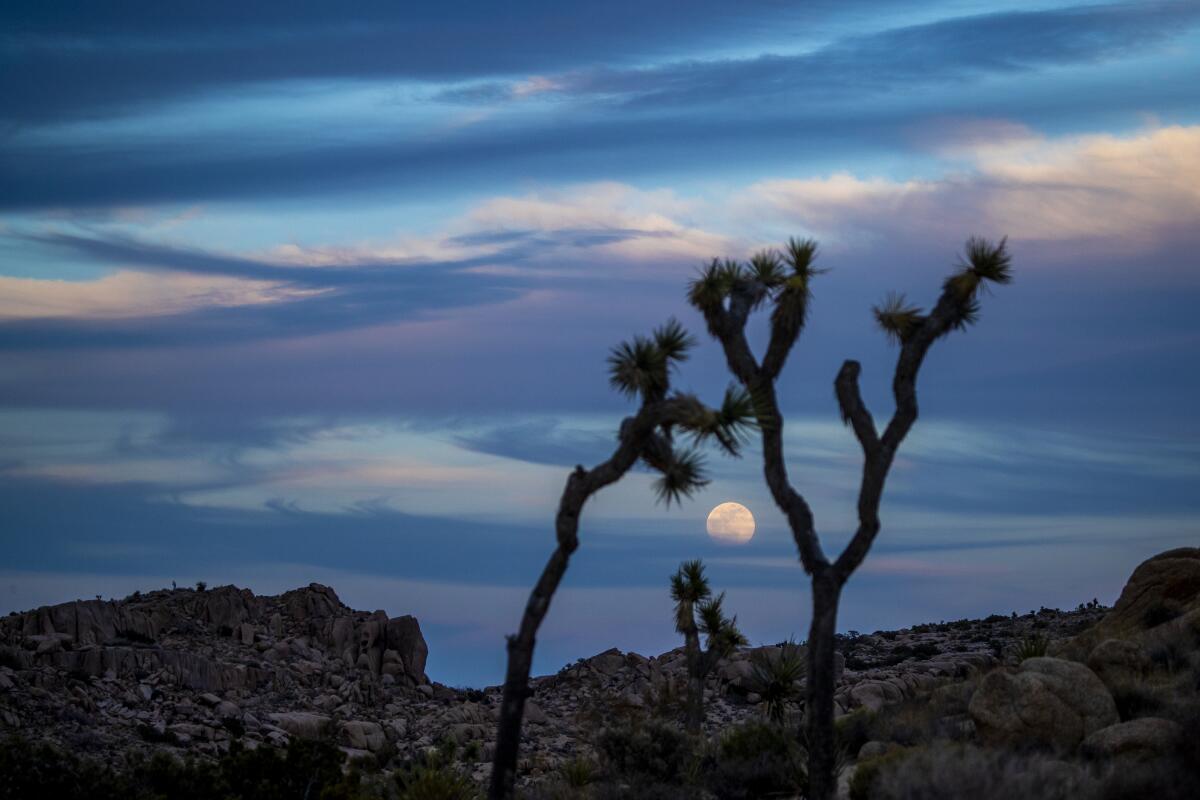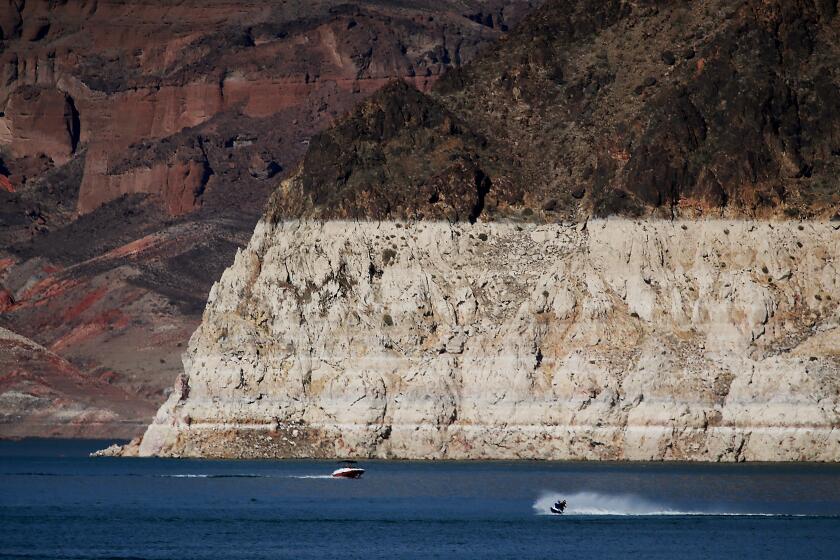Newsom administration offers legislation to protect western Joshua tree

- Share via
Gov. Gavin Newsom’s administration on Wednesday proposed the first legislation focused on protecting a climate-threatened species while also permitting development across Southern California’s sunniest desert parcels.
The Western Joshua Tree Conservation Act was prompted by the California Fish and Game Commission’s inability to act on a petition filed more than three years ago seeking to list the living symbols of the California desert as threatened under the California Endangered Species Act.
“Compromise is always painful,” said Brendan Cummings, conservation director of the Center for Biological Diversity and an author of the petition. “But at the end of the day, I’ll be happy if this bill passes.”
The Newsom Administration’s intervention reflects a volatile reality: Opponents of the petition warn that listing the western Joshua tree could derail private property improvements and renewable energy projects designed to help meet California’s climate change goals of shifting the state’s electricity system entirely off fossil fuels by 2045.
To hear renewable-energy industry representatives tell it, helping to eliminate greenhouse gas emissions would also help to mitigate climate change and the threat it poses to sensitive desert species such as the western Joshua tree.
Colorado River in Crisis is a series of stories, videos and podcasts in which Los Angeles Times journalists travel throughout the river’s watershed, from the headwaters in the Rocky Mountains to the river’s dry delta in Mexico.
“The solar and storage industry is encouraged by this proposed legislation and appreciates the work of state leaders to maintain California’s clean energy leadership and protect the iconic Joshua tree,” said Sean Gallagher, senior vice president of policy for the Solar Energy Industries Association.
Because the western Joshua tree is widespread on both public and private lands in urban and rural communities, the permitting process for the iconic species “is more complex than for any species currently listed under the California Endangered Species Act,” state wildlife authorities said on Wednesday.
The commission in June deadlocked 2 to 2 on whether to make the protection sought by the Center for Biological Diversity permanent. On Wednesday, the commissioners voted to postpone a decision on the petition until the bill is approved or rejected by the Legislature.
The proposed legislation is based on input from stakeholders including conservationists, lawmakers, tribal leaders, property owners, renewable energy companies, labor organizations and the construction industry, officials said.
It calls for preparation of a range-wide conservation plan for the species by 2024 and would authorize the California Department of Fish and Wildlife to permit the taking of a western Joshua tree only if certain conditions were met.
For instance, permittees would be required to mitigate losses due to construction or pay mitigation fees that would be used to fund conservation projects and the administrative costs of policing development projects.
Nearly half of the western Joshua tree’s range is on private land that includes the rapidly growing communities of Palmdale, Lancaster, Hesperia, Victorville, and Yucca Valley.
Temporary protections offered candidates for listing normally remain in place until a final vote is taken by the commission.
The proposed legislation recognizes the importance of resolving conflicts between conservationists and developers, and the critical role renewable energy projects play in reducing greenhouse gas emissions and the negative impacts of climate change, and current housing needs in California, including single-family, multi-family, and mixed-use projects.
At stake is the survival of more than 1 million of the sensitive spindly trees facing a relatively distant but potentially lethal climatic scenario unfolding across their ancient domain.
Both the bill and the petition argue that California will see more frequent and intense droughts and floods because of a warming climate, as well as increasing extreme heat days, increased wildfire intensity, worsening air quality and increasing electricity demand because of these same issues.
The effects, scientists say, will combine with other factors to reduce survival of western Joshua trees, which in some areas are already clinging to existence at the extremes of their ability to tolerate these environmental parameters.
Conservationists fear that without special state protections, the species could lose 90% of its range by 2100.
One California water manager says Colorado River reservoirs aren’t likely to refill. Scientists agree that the region needs to plan for a drier future.
A year ago, however, state wildlife biologists recommended against listing the species after concluding that claims in the petition about the effects of climate change will have on the large yuccas were premature.
They questioned the reliability of computer models suggesting the species is in decline throughout its range. That’s because, they said, while there has been a decline in the western Joshua tree population in certain portions of its historic range, in other areas the species numbers in the millions.
The bill aims to avoid leaving the plants’ fate up to local jurisdictions, where many residents and policy makers believe the species scientists know as Yucca brevifolia is already protected in many city and county native plant ordinances, and within 800,000-acre Joshua Tree National Park.
Listing the species, they argued, would hamper job creation, and restrict development on private property.
Researchers for decades have warned about existential threats to the plants, which grow about 40 feet in height and live about 200 years.
In the 1930s, the soft, light wood of Joshua trees was used to manufacture furniture for the entertainment industry, including prop chairs that actors and comedians slammed each other over the head with.
Since the 1980s, hundreds of thousands of the plants have been removed to make way for renewable energy facilities or housing and shopping centers in desert boom towns such as Lancaster and Palmdale.
Now, scientists say the plants are failing to reproduce at hotter, drier lower elevations. Drought conditions, which are expected to occur with greater frequency over the coming decades, they say, will lead to higher mortality rates for mature Joshua trees.
In addition, exotic grasses feeding off nitrogen-laden smog wafting in from the Los Angeles area are leaving existing western Joshua tree woodlands vulnerable to wildfire. In 2020, the Cima Dome fire killed as many as 1.3 million of the plants across more than 40,000 acres of California desert, including a large portion of Mojave National Preserve.









